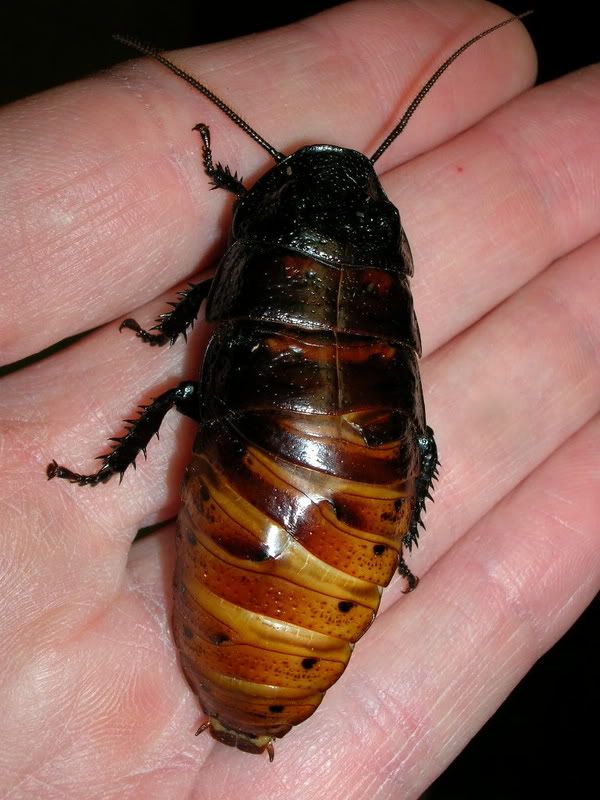Genetic deformities in roaches are rare and often once in a lifetime events, such as the hisser Gyandromorph depicted on the Allpet Roaches main page. While such deformities tend to be undesirable they usually can't be bred for anyway since the individual is incapable of reproducing. The following is a rare mutant of Blaptica dubia. At a glance it seems like an interesting mutation due to the white sections but on closer inspection the legs on the white side are deformed and the mutation is a result of bigger problems and not just a color issue. Unfortunately this animal died.
Ryan Nefcy gave me permission to post his photos:
/monthly_09_2007/post-3-1190452479_thumb.jpg
/monthly_09_2007/post-3-1190452637_thumb.jpg
Ryan Nefcy gave me permission to post his photos:
/monthly_09_2007/post-3-1190452479_thumb.jpg
/monthly_09_2007/post-3-1190452637_thumb.jpg
Attachments
Last edited by a moderator:






